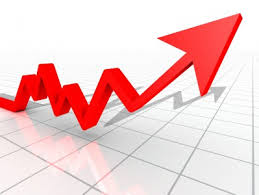
The law of supply and demand doesn’t apply to health care. Lower demand means higher cost.
This is directly due to secretive managed care contracts which guarantee price increases every year, year after year. Why on earth would a plan sponsor sign on to this? (Hint: Because they don’t know what they don’t know). See Escalator Clauses, Rising Prices, And Why We Should Care
Well, smarter plan sponsors know. They have left the managed care world and pay providers a transparent benchmark price off Medicare fee schedules of anywhere from 110% to 140%. The results? Minimal cost increases of less than 2% per year versus double digit increases through PPO contracts. See Why Did It Take So Long To Realize PPO’s Suck?
The following article clearly describes why medical costs increase every year. It’s real simple: the American health care system of finance, cloaked in secrecy and deception, is a never ending honey pot for third party intermediaries………………..“Don’t worry, your cost today is your $25 co-pay, the insurance company will pay the rest……………..”
The cost of health care has remained essentially static over the past 10 years, but the cost of health insurance has not………….we have the evidence. Do you want to see it?
Rising prices, not utilization, driving up healthcare spending
January 23, 2018 | John Gregory | Finance
Increased prices for many healthcare services were almost entirely responsible for driving up healthcare spending by 15 percent between 2012 and 2016, according to a report by the Health Care Cost Institute (HCCI).
The HCCI analysis covers spending and utilization between 2012 and 2016 for people covered by employer-sponsored health insurance plans from four carriers: Aetna, Humana, Kaiser Permanente and UnitedHealthcare.
Utilization of most services declined over the study period, with inpatient utilization seeing the biggest drop of 12.9 percent. Prescription drug utilization increased slightly, by 1.8 percent. In contrast, all categories examined by the report saw major price increases between 2012 and 2016: Prescription drug prices were up 24.9 percent, inpatient prices were up 24.3 percent, outpatient prices rose 17.7 percent and prices for professional services, such as primary care or specialist visits and administered drugs, were up 14.6 percent.
The result was increased spending across all these categories, and the double-digit jumps in prices erased decreases in utilization. To Niall Brennan, MPP, president of HCCI, these findings call for “a national conversation on the role of price increases in the growth of healthcare spending.”
“Despite the progress made in recent years on value-based care, the reality is that working Americans are using less care but paying more for it every year,” he said in a press release. “Rising prices, especially for prescription drugs, surgery and emergency department visits, have been primary drivers of faster growth in recent years.”
The report showed signs the price growth trend is worsening and shifting to new areas. Total spending per person in 2016 was 4.6 percent higher in 2015, hitting $5,407 for the commercially insured. Growth between 2012 and 2013 had been 2.8 percent. The biggest contributor to increased spending in 2016 was outpatient services, surpassing prescription drug spending, making up 6.2 percent of the annual change in spending per person for 2016.
The key drivers in outpatient price growth were surgery and emergency room visits. While the number of ER visits over the 2012-16 study period rose by just 2 percent, the average price for an ER visit grew 31.5 percent. Utilization in outpatient surgery saw a major decline of 16 percent between 2012 and 2016, but the average price went in the opposite direction, rising by more than 19 percent. Surgeries were responsible for 28 percent of the cumulative increase in outpatient spending over the study period and accounted to 37 percent of all outpatient spending.
Surgery was also responsible for the majority (52 percent) of inpatient spending. While utilization of surgical procedures in inpatient hospital settings declined by 16 percent between 2012 and 2016, prices rose by more than 30 percent.
“The average cost of an inpatient surgery is now over $40,000 and that’s an increase of $10,000 over a five-year period,” Brennan said on a conference call with reporters. “Our initial results suggest there is not a strong case mix effect,” adding that utilization decreases and price increases appear consistent across all diagnostic categories.
For professional services, which made up the largest share of healthcare spending in 2016, growth was a relatively low 11 percent over the study period. Administered drugs had the higher per person spending growth (37 percent) while specialist office visits were also a driver, with spending on those services increasing by 30 percent.
Brennan said further study is needed to find out whether patients are substituting primary care visits with specialist office visits increased use of preventive care is leading to more follow-up visits with a specialist. Specialist utilization increased over the study period while primary care visits dropped 18 percent.
For prescription drugs, the report found the greatest extremes between declines in utilization and rising prices. For brand name drugs, prices jumped 110 percent during the study period while the number of filled days declined by 38 percent. New and expensive hepatitis C treatments were the primary drivers in this category, Brennan said, other treatments saw the same pattern of prices spiking while utilization dropped. For example, utilization of brand name cardiovascular drugs declined by 65 percent while prices jumped 70 percent.
When reporters asked Brennan why prices haven’t declined as demand for services appeared to be dropping, he said he could offer no definitive conclusions, though he said in his experience, he’s “not sure common sense applies to healthcare prices.” One possible explanation is these are the effects of consolidation among hospitals, health systems and all providers, as their increased bargaining power leads to higher prices for consumers and payers.
“Obviously that’s something we want to look at in more detail to see if we can draw a definitive link,” Brennan said.

